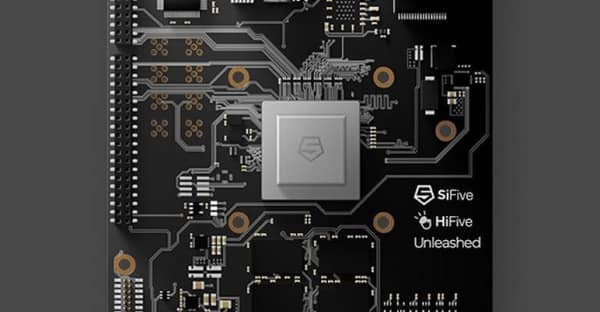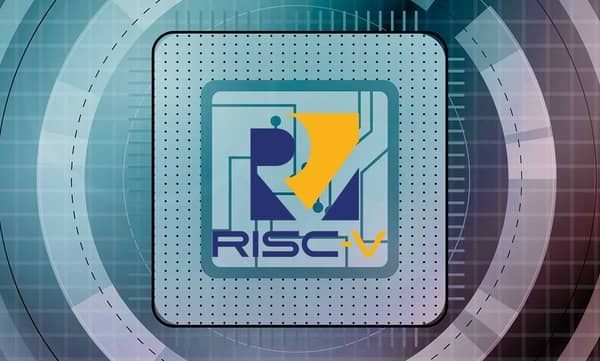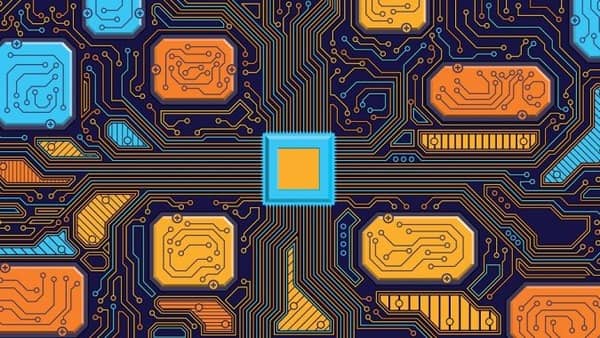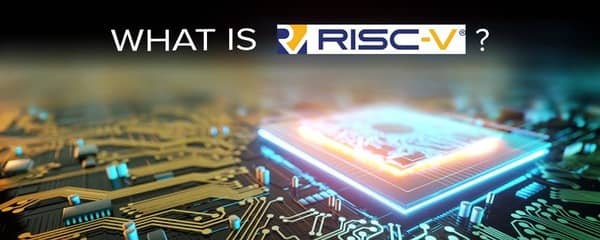
What Is a Technology Stack?
September 12, 2024
What Is Neuromorphic Computing?
September 23, 2024On this Page…
- How Does RISC-V Improve Efficiency?
- Where Did RISC-V Begin?
- What Are the Advantages of the RISC-V?
- What Are the Potential Disadvantages of RISC-V?
- What Are the Possible Applications of RISC-V?
- Conclusion
Computer systems rely on the ISA or Instruction Set Architecture as their fundamental framework for computing. Among the different ISAs, RISC-V stands out with the potential to disrupt the industry, which is currently dominated by Intel and Arm. RISC-V offers a new approach to computer design, focusing on flexibility, efficiency, and power savings. We explore the world of RISC-V—its core philosophy and the advantages it brings to the technology industry.

How Does RISC-V Improve Efficiency?
RISC-V is a progressive computer design that follows RISC or Reduced Instruction Set Computer philosophy. It stands out from traditional designs by employing a streamlined and compact set of instructions that enhances computing efficiency and reduces power consumption. Inspired by popular RISC architectures like ARM processors, RISC-V opens up new possibilities for innovation. With its smaller instruction set, RISC-V improves computing efficiency which is particularly beneficial to smart devices and wearables technology.
A key characteristic of RISC architectures is the integration of multiple modules into a single chip, known as SOC or System on a Chip. By embracing an open-standard and innovative approach, RISC-V has the potential to be a game-changer.
Even with its challenges, RISC-V exhibits tremendous potential as a simple, efficient, and customizable alternative to other ISAs. Its open nature allows for more collaboration and customized solutions, making RISC-V a strong contender in the field of computer design. The simplicity and efficiency of RISC-V combined with its open-standard approach could bring in a new era of innovation and accessibility in computing.

Where Did RISC-V Begin?
RISC-V has grown and evolved since its conception in 2010 at UC Berkeley. It’s made its way into the mainstream with the help of the nonprofit organization RISC-V International. The evolution and growth of RISC-V is from the collaboration of over 3,100 global members including various academic institutions and corporations continuing to actively contribute to the open instruction set architecture.
Since its formation, RISC-V has continued to grow and expand. In February 2022, the well-known tech company, Intel, established a $1 billion fund to support companies creating RISC-V chips. This move showed the willingness of one of the major players in the industry to collaborate with up-and-coming innovators. There have been even more advancements, which we cover in a later section, but because of its numerous advantages, the Instruction Set Architecture continues to grow.

What Are the Advantages of the RISC-V?
There are several advantages of RISC-V including its design which makes it simple and adaptable. It starts with a basic instruction set architecture called RV32I, consisting of only 47 instructions for essential operations like addition and subtraction.
RISC-V also uses a modular approach that enables the addition of optional extensions to tailor CPUs for specific needs. These extensions include multiplication, floating-point operations, and compressed instructions. These customization capabilities make RISC-V extremely flexible and suitable for various applications, including energy-efficient wearables to high-performance computing systems.
Again, another advantage of RISC-V is its open standard approach. Unlike traditional proprietary architectures, RISC-V works with the idea of accessibility. It provides a fair opportunity for chip designers by being accessible and free from licensing fees. RISC-V’s worldwide presence also potentially establishes a global standard without any geographical restrictions.
It also allows various individuals and organizations including researchers and emerging tech companies to contribute freely to its development. This collaborative approach promotes innovation, encourages global cooperation in the tech industry, and supports accessibility. It also helps pave the way for a more interconnected and innovative future in chip design.

What Are the Potential Disadvantages of RISC-V?
While the open-standard nature of RISC-V presents many advantages, developing a RISC-V chip is not without its challenges. The process of functional verification, which ensures that a chip will work as intended before it’s physically made, can take a lot of time and money.
Many opt to license pre-existing RISC-V cores from commercial IP vendors to navigate the difficulties and expenses of designing a chip from the ground up. Those who are committed to designing unique chips need to leverage electronic design automation tools, which can be very costly. These specialized software systems can simulate, design, and verify a design with the RISC-V ISA and effectively support the complex task of chip design.
The open nature of RISC-V provides developers with considerable freedom to adapt the architecture to meet their specific needs. This flexibility allows for tailoring processors to unique requirements, unlocking innovation and enabling diverse applications. However, there is a potential drawback to the openness and unregulated customization—fragmentation.
The challenge of fragmentation for RISC-V is due to diverse processor variations, which can potentially complicate software needs and risk broad compatibility. To mitigate this and promote a unified ecosystem, collaborative and community-driven efforts are vital for ensuring widespread adoption and standardization of RISC-V.
To address this challenge, RISC-V International requires all custom extensions to be made public. Enforcing this policy ensures that all customizations are available for examination, ratification, and standardization by the global RISC-V community. This approach maintains a unified and standardized development path while still allowing room for creativity and innovation.

What Are the Possible Applications of RISC-V?
RISC-V processors have great potential for applications across many different technology sectors, including AI, virtual reality, automotive systems, and network infrastructure. Their openness allows for extensive customization that can potentially cater to the industry’s different needs.
RISC-V is showing its ability for high-performance computing with the introduction of the first RISC-V supercomputer in June 2022. This shows its capability for advanced computing applications. NASA has also acknowledged RISC-V’s aptness for critical endeavors and plans to utilize it for their next-generation High-Performance Spaceflight Computing processor. This recognition in specialized domains suggests the growing adoption of RISC-V.
Again, the potential applications of RISC-V span a wide range, from everyday wearables to high-performance computing systems, and even future RSIC-V data centers. With its adaptability and customization capabilities, RISC-V offers a promising solution for various industries that are seeking innovative and tailored chip designs.

Conclusion
Computing continues to grow with the introduction of quantum computing, cognitive computing, and more. RISC-V is becoming a game-changer in computer chip design, and it has the potential to revolutionize the computing industry. Its core principles of simplicity, efficiency, and openness make it an intriguing alternative to current standard ISAs. The ability to customize and expand the instruction set architecture unlocks opportunities for innovation across many different applications. As RISC-V gains increasing momentum, its influence on the future of technology promises to be substantial and wide-ranging. Embracing RISC-V opens the door to a new era of computing possibilities. It can usher in a world of technology where collaboration, customization, and cutting-edge advancements can flourish.

